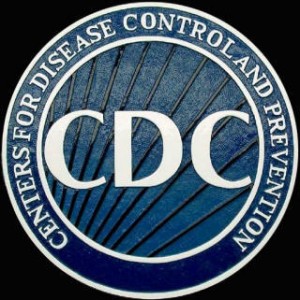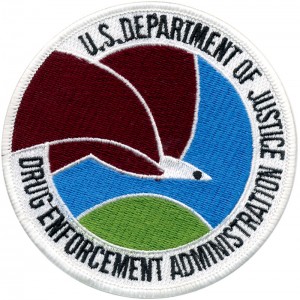WASHINGTON D.C.
 Heroin use has increased across the United States among men and women, most age groups, and all income levels. The greatest increases have occurred in groups with historically lower rates of heroin use, including women and people with private insurance and higher incomes.
Heroin use has increased across the United States among men and women, most age groups, and all income levels. The greatest increases have occurred in groups with historically lower rates of heroin use, including women and people with private insurance and higher incomes.
In addition, nearly all people who use heroin also use multiple other substances, according to the latest Vital Signs report from the Centers for Disease Control and Prevention (CDC) and the Food and Drug Administration (FDA).
The report also finds the strongest risk factor for a heroin use disorder is a prescription opioid use disorder.
As heroin use increases, more people are dying from heroin overdoses. Heroin-involved overdose deaths nearly doubled between 2011 and 2013; more than 8,200 people died in 2013 alone.
“Heroin use is increasing at an alarming rate in many parts of society, driven by both the prescription opioid epidemic and cheaper, more available heroin,” said CDC Director Tom Frieden. “To reverse this trend we need an all-of-society response – to improve opioid prescribing practices to prevent addiction, expand access to effective treatment for those who are addicted, increase use of naloxone to reverse overdoses, and work with law enforcement partners like DEA to reduce the supply of heroin.”
 For this Vital Signs report, FDA and CDC analyzed data from the 2002-2013 National Survey on Drug Use and Health, sponsored by the Substance Abuse and Mental Health Services Administration and the National Vital Statistics System.
For this Vital Signs report, FDA and CDC analyzed data from the 2002-2013 National Survey on Drug Use and Health, sponsored by the Substance Abuse and Mental Health Services Administration and the National Vital Statistics System.
Heroin trends among demographic and substance-using groups were compared for 2002- 2004, 2005-2007, 2008-2010, and 2011-2013. Characteristics associated with heroin use disorders were identified through multivariable logistic regression analysis.
Key findings include:
Nearly all (96 percent) people who reported heroin use also reported using at least one other drug in the past year with more than half (61 percent) using at least three other drugs.
The people most at-risk of heroin abuse or dependence include non-Hispanic whites, men, 18-to-25 year-olds, people with an annual household income less than $20,000, Medicaid recipients, and the uninsured.
Significant increases in heroin use were found in groups with historically low rates of heroin use, including women and people with private insurance and higher incomes. The gaps between men and women, low and higher incomes, and people with Medicaid and private insurance have narrowed in the past decade.
People who abuse or are dependent on:
o prescription opioid painkillers are 40 times more likely to abuse or be dependent on heroin.
o cocaine are 15 times more likely to abuse or be dependent on heroin.
o marijuana are 3 times more likely to abuse or be dependent on heroin.
o alcohol are 2 times more likely to abuse or be dependent on heroin.
As heroin abuse or dependence has increased so has heroin-related overdose deaths. From 2002 through 2013, the rate of heroin-related overdose deaths nearly quadrupled.
“Approximately 120 people die each day in the United States of a drug overdose,” said DEA Acting Administrator Chuck Rosenberg.
Adding, “The CDC’s Vital Signs illustrates two significant factors partly fueling that alarming number – the misuse of prescription drugs and a related increase in heroin use. We will continue to target the criminal gangs that supply heroin, and we will work to educate folks about the dangers and to reduce demand. In this way, we hope to complement the crucial efforts of the CDC and our nation’s public health agencies.”
These key findings highlight the need for a comprehensive response that addresses the growing number of demographic groups using heroin along with multiple other drugs and should be considered in the development and implementation of prevention policies.
“We are working with federal, state and local partners to increase access to effective treatment, while reducing overdoses and other consequences of the opioid epidemic, including the spread of Hepatitis C and HIV,” said Michael Botticelli, director of National Drug Control Policy. “It is not enough to simply reverse overdoses. We must also connect overdose victims and people struggling with prescription drug and heroin use disorders to treatment facilities and doctors that offer medication-assisted treatment.”
States play a central role in addressing and helping to reverse the heroin epidemic; states can:
Address the strongest risk factor for heroin abuse or dependence: abuse or dependence on prescription opioid painkillers.
o Make prescription drug monitoring programs (electronic databases that track the dispensing of certain drugs) timely and easy to use. Providers can analyze patient prescription-drug history and make informed decisions before prescribing opioid painkillers.
o Look at the data and practices of state Medicaid and worker’s compensation programs to identify and reduce inappropriate prescribing.
Increase access to substance abuse treatment services, including medication-assisted treatment (MAT) for opioid abuse or dependence.
o Work with Medicaid and other insurance companies to provide coverage for MAT.
o Support adoption of MAT in community settings.
Expand access to and training for administering naloxone to reduce opioid overdose deaths.
Ensure that people have access to integrated prevention services, including access to sterile injection equipment from reliable sources, as allowed by local policy.
Help local jurisdictions to put these effective practices to work in communities where drug abuse or dependence is common.
Health and Human Services Secretary Sylvia M. Burwell has made addressing opioid abuse, dependence, and overdose a priority and work is underway within HHS on this important issue.
The evidence-based initiative focuses on three promising areas: informing opioid prescribing practices, increasing the use of naloxone – a drug that reverses symptoms of a drug overdose, and using medication-assisted treatment to slowly move people out of opioid addiction.
The Obama administration is also committed to tackling the prescription drug and heroin epidemic by proposing significant investments to intensify efforts to reduce opioid misuse and abuse.
For more information about prescription drug overdose, please visit www.cdc.gov/drugoverdose.
Vital Signs is a CDC report that appears on the first Tuesday of the month as part of the CDC journal Morbidity and Mortality Weekly Report.
The report provides the latest data and information on key health indicators. These are cancer prevention, obesity, tobacco use, motor vehicle passenger safety, prescription drug overdose, HIV/AIDS, alcohol use, health care-associated infections, cardiovascular health, teen pregnancy, food safety and viral hepatitis.

